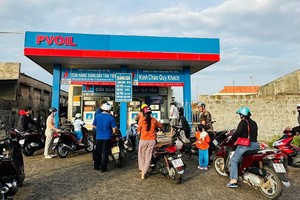 At the meeting
At the meeting
The Ministry released the information at today's third session on digital transformation at the government headquarters chaired by Prime Minister Pham Minh Chinh, Chairman of the National Committee on Digital Transformation.
According to the work plan, the National Committee on Number Transformation meets quarterly. The third meeting aimed to evaluate digital transformation results in the first six months of 2022 and identify solutions and tasks for digital transformation in the coming time.
The meeting was connected to the headquarters of ministries, ministerial-level agencies, governmental agencies, and people's committees of provinces and cities virtually.
Addressing the opening session, Prime Minister Pham Minh Chinh stated: The document of the 13th Party Congress has identified the national digital transformation as a very important task, associated with three main pillars including the digital government, the digital economy and the digital society in which everything runs on digital technology where paperless and electronic means are the norm. Digital transformation is an inevitable trend and it is identified as a mandatory requirement.
The Prime Minister emphasized that digital transformation is a major policy and orientation of the Party and State that must monitor and implement regularly. All sectors and agencies must accelerate digital transformation for the implementation of comprehensive and synchronous tasks. The Prime Minister stated that civil servants should work hard for the country’s benefit and for the sake of residents.
The Ministry of Information and Communications reported the country’s digital transformation in the first six months of 2022, adding that so far, the ministry has coordinated with ministries and sectors to direct the development and evaluation of 50 digital platforms including 18 platforms for digital government, 16 platforms for the digital economy and 16 platforms for the digital society.
Regarding the development of the national database, up to now, the national population database has been promoted to connect and share data for providing online public services and utilities to people and businesses.
In particular, the national database on health insurance information of 27 million households includes information of 98 million people. The electronic national database has about 28 million birth registration data; of them, more than 7 million children are granted personal identification numbers as prescribed, over 6 million people have been issued marriage registration; plus, the government has issued over 4 million death registration.
Nevertheless, the registration information of more than 1 million enterprises and affiliated units has been updated in the national database.
To date, the percentage of eligible public services delivered online at level 4 is 97.3 percent; the rate of online public services generating dossiers is 45.7 percent, 1.6 times higher than the same period in 2021. The online processing rate is 36.9 percent, an increase of about 10 percent over the same period in 2021.
A number of online public services have shown remarkable effectiveness in serving the people, such as registration services for high school graduation exams, service of registration and issuance of license plates for motorbikes and motorbikes, and ordinary passport services.
The report also said that network information security revenue reached VND 1,418 billion, an increase of 48.8 percent over the same period in 2021. The proportion of network information security products and services in Vietnam compared to 22 groups of network information security ecosystem products reached 95.5 percent. The production/import ratio in June 2022 reached 72.6 percent.
The proportion of the added value of the digital economy in GDP by the end of the first six months is estimated at 10.41 percent while this proportion in 2021 is estimated at 9.6 percent.
The country strived to achieve the target of 20 percent by 2025. The rate of enterprises paying taxes electronically reaches 99 percent and all operating enterprises have been using e-invoices.
The Ministry of Information and Communications also said that in the first five months of 2022, non-cash payment transactions increased by 76 percent in quantity and 30.6 percent in value over the same period in 2021.
Above all, smartphones and QR Codes had the most impressive growth. Non-cash payment transactions by smartphones had a percentage of 99.1 in quantity and 86.1 in value, and through QR Code increased by 68.9 percent in quantity and 113.2 percent in value over the same period in 2021.
























